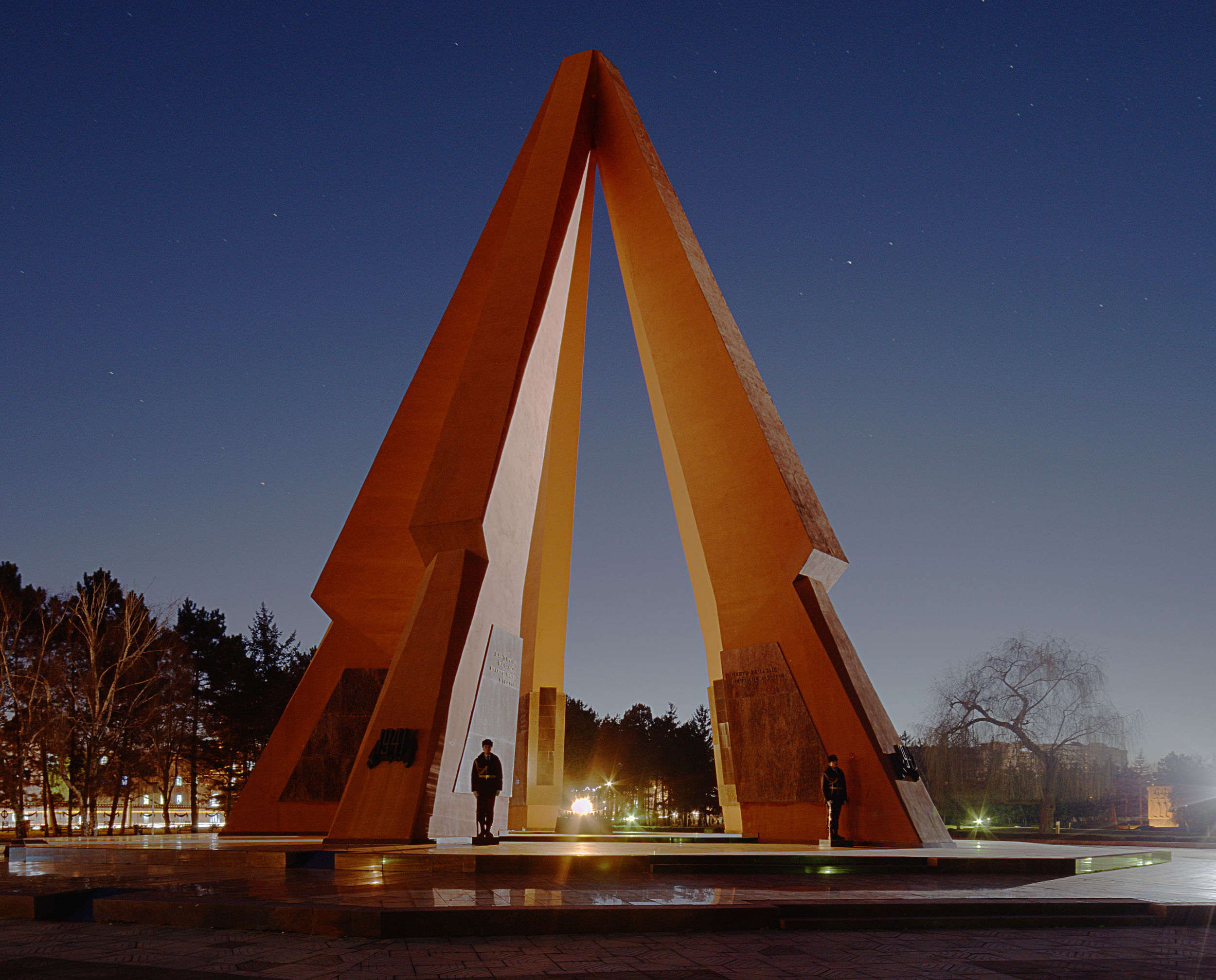|
Caransebeș Prison
The Caransebeș Prison was a prison in Caransebeș, Romania. The prison was built in 1911–1913, under Austria-Hungary, with a capacity of 500. Built of stone and brick in a U-shape, it had thick walls. The ground floor contained housing for the guards, a visiting area and workrooms. An infirmary, a small library, a barbershop and the warden's apartment were on the first upper floor. The cells were on the three upper floors, with three to thirty beds, usually bunked. The storerooms were in the basement. There were two yards, one for walks and the other for gardening, electricity and showers on the ground floor. Common criminals, thieves and murderers, were held there until 1941. That year, under the Ion Antonescu regime, those accused of communist activity and espionage began to be sent there. There were around 150–200 prisoners belonging to this category, part of them previously held at Doftana prison, Doftana Prison, which collapsed in the 1940 Vrancea earthquake. Until the 19 ... [...More Info...] [...Related Items...] OR: [Wikipedia] [Google] [Baidu] |
Gheorghe Pintilie
Gheorghe Pintilie (born Panteley Timofiy Bodnarenko, ; also rendered as Pintilie Bodnarenco, nicknamed Pantiușa; November 9, 1902 – August 21, 1985) was a Soviet and Romanian intelligence agent and political assassin, who served as first head of the Securitate (1948–1958). Born as a subject of the Russian Empire in Tiraspol, he was briefly employed as a manual laborer, and trained as a locksmith, before joining the Red Army cavalry and seeing action in the Russian Civil War. The NKVD shortlisted him for espionage missions in the 1920s, and in 1928 sent him on for such clandestine work in the Kingdom of Romania. Bodnarenko was apprehended there some nine years later, and sentenced to a twenty-years' imprisonment. While at Doftana, he became the ringleader of imprisoned Soviet spies, together with whom he joined the Romanian Communist Party (PCR). He expressed his loyalty toward Gheorghe Gheorghiu-Dej, the jailed communist and emerging factional leader; their tight political cam ... [...More Info...] [...Related Items...] OR: [Wikipedia] [Google] [Baidu] |
Securitate
The Department of State Security (), commonly known as the Securitate (, ), was the secret police agency of the Socialist Republic of Romania. It was founded on 30 August 1948 from the '' Siguranța'' with help and direction from the Soviet MGB. The Securitate was, in proportion to Romania's population, one of the largest secret police forces in the Eastern bloc. The first budget of the Securitate in 1948 stipulated a number of 4,641 positions, of which 3,549 were filled by February 1949: 64% were workers, 4% peasants, 28% clerks, 2% persons of unspecified origin, and 2% intellectuals. By 1951, the Securitate's staff had increased fivefold, while in January 1956, the Securitate had 25,468 employees.Cristian Troncota"Securitatea: Începuturile", Magazin Istoric, 1998 At its height, the Securitate employed some 15,000 agents and almost half a million informants for a country with a population of 23 million by 1989. The Securitate under Nicolae Ceaușescu was one of the most br ... [...More Info...] [...Related Items...] OR: [Wikipedia] [Google] [Baidu] |
Emil Hațieganu
Emil Hațieganu (December 9, 1878—May 13, 1959) was a Romanian politician and jurist, a prominent member of the Romanian National Party (PNR) and of its successor, the National Peasants' Party (PNȚ); he was physician Iuliu Hațieganu's brother. Before his arrest, he was an honorary member of the Romanian Academy. He was born in Tritenii de Jos, Transylvania (inside the Kingdom of Hungary in Austria-Hungary at the time, now in Cluj County, Romania), the son of , a Greek Catholic priest. He attended gymnasium and high school in Blaj and Cluj, and then studied Law at Franz Joseph University in Cluj, graduating in 1901. Afterwards, he practiced Law and was a judge in Huedin, Ileanda, and Cluj. Hațieganu later became a professor at the University of Cluj, and served as its rector in 1929–1930. Following World War I and the Aster Revolution in Hungary, he was present with PNR leaders at the Alba Iulia assembly that called for the union of Transylvania with Romania, and ... [...More Info...] [...Related Items...] OR: [Wikipedia] [Google] [Baidu] |
The Government Inspector
''The Government Inspector'', also known as ''The Inspector General'' (, literally: "Inspector"), is a satirical play by Russian dramatist and novelist Nikolai Gogol. Originally published in 1836, the play was revised for an 1842 edition. Based upon an anecdote allegedly recounted to Gogol by Pushkin, the play is a comedy of errors, satirizing human greed, stupidity, and the political corruption of contemporary Russia. The dream-like scenes of the play, often mirroring each other, whirl in the endless vertigo of self-deception around the main character, Khlestakov (rendered in some English translations as Hlestakov), who personifies irresponsibility, light-mindedness, and absence of measure. "He is full of meaningless movement and meaningless fermentation incarnate, on a foundation of placidly ambitious inferiority" (D. S. Mirsky). The publication of the play led to a great outcry in the reactionary press. It took the personal intervention of Tsar Nicholas I to have the play ... [...More Info...] [...Related Items...] OR: [Wikipedia] [Google] [Baidu] |
Nikolai Gogol
Nikolai Vasilyevich Gogol; ; (; () was a Russian novelist, short story writer, and playwright of Ukrainian origin. Gogol used the Grotesque#In literature, grotesque in his writings, for example, in his works "The Nose (Gogol short story), The Nose", "Viy (story), Viy", "The Overcoat", and "Nevsky Prospekt (story), Nevsky Prospekt". These stories, and others such as "Diary of a Madman (Nikolai Gogol), Diary of a Madman", have also been noted for their Proto-Surrealism, proto-surrealist qualities. According to Viktor Shklovsky, Gogol used the technique of defamiliarization when a writer presents common things in an unfamiliar or strange way so that the reader can gain new perspectives and see the world differently. His early works, such as ''Evenings on a Farm Near Dikanka'', were influenced by his Ukrainian upbringing, Ukrainian culture and Ukrainian folklore, folklore. His later writing satirised political corruption in contemporary Russian Empire, Russia (''The Government I ... [...More Info...] [...Related Items...] OR: [Wikipedia] [Google] [Baidu] |
October Revolution
The October Revolution, also known as the Great October Socialist Revolution (in Historiography in the Soviet Union, Soviet historiography), October coup, Bolshevik coup, or Bolshevik revolution, was the second of Russian Revolution, two revolutions in Russia in 1917. It was led by Vladimir Lenin's Bolsheviks as part of the broader Russian Revolution of 1917–1923. It began through an insurrection in Petrograd (now Saint Petersburg) on . It was the precipitating event of the Russian Civil War. The initial stage of the October Revolution, which involved the assault on Petrograd, occurred largely without any casualties. The October Revolution followed and capitalized on the February Revolution earlier that year, which had led to the abdication of Nicholas II and the creation of the Russian Provisional Government. The provisional government, led by Alexander Kerensky, had taken power after Grand Duke Michael Alexandrovich of Russia, Grand Duke Michael, the younger brother of ... [...More Info...] [...Related Items...] OR: [Wikipedia] [Google] [Baidu] |
Romanian Orthodox
The Romanian Orthodox Church (ROC; , ), or Romanian Patriarchate, is an autocephalous Eastern Orthodox church in full communion with other Eastern Orthodox Christian churches, and one of the nine patriarchates in the Eastern Orthodox Church. Since 1925, the church's Primate has borne the title of Patriarch. Its jurisdiction covers the territories of Romania and Moldova, with additional dioceses for Romanians living in nearby Ukraine, Serbia and Hungary, as well as for diaspora communities in Central and Western Europe, North America and Oceania. It is the only autocephalous church within Eastern Orthodoxy to have a Romance language for liturgical use. The majority of Romania's population (16,367,267, or 85.9% of those for whom data were available, according to the 2011 census data), as well as some 720,000 Moldovans, belong to the Romanian Orthodox Church. Members of the Romanian Orthodox Church sometimes refer to Orthodox Christian doctrine as ''Dreapta credință'' ("right ... [...More Info...] [...Related Items...] OR: [Wikipedia] [Google] [Baidu] |
Caransebeș Airport
Banat Airport Caransebeș or Aeroportul Caransebeș is located east northeast of Caransebeș in western Romania, in Caraș-Severin County. History A former military base, this was the only commercial airport in Romania not located in the proximity of a large urban area. Currently there is no regular service to this airport. In 1994 TAROM suspended its direct flights from Aurel Vlaicu International Airport in Bucharest, and in 2002 the airport was bought by a private company. In 2019 the owner changed and in 2020 they opened for traffic. The airport management together with authorities are working to open the airport for international traffic. Facilities There is a large capacity of parking for aircraft. The management estimate that approximately 45 Airbus A320s or 65 ATR 72s may be parked in the airport. The Banat Aviation Academy is located on the airport premises. See also *Aviation in Romania *Transport in Romania Transportation infrastructure in Romania is the ... [...More Info...] [...Related Items...] OR: [Wikipedia] [Google] [Baidu] |
Transnistria Governorate
The Transnistria Governorate () was a Romanian-administered territory between the Dniester and Southern Bug, conquered by the Axis Powers from the Soviet Union during Operation Barbarossa. A Romanian civilian administration governed the territory from 19 August 1941 to 29 January 1944. A brief military administration followed, during which the Romanians withdrew from the region by late March 1944. German control became official on 1 April 1944. Limited in the west by the Dniester river (separating it from Bessarabia), in the east by the Southern Bug river (separating it from the German Reichskommissariat Ukraine), and in the south by the Black Sea, it comprised the present-day region of Transnistria (which compared to the World War II in whole is only a small strip along the bank of the Dniester) and territories further east (modern Odesa Oblast eastward of the Dniester, southern Vinnytsia Oblast and a small part of Mykolaiv Oblast), including the Black Sea port of Odesa, which ... [...More Info...] [...Related Items...] OR: [Wikipedia] [Google] [Baidu] |
Iron Guard
The Iron Guard () was a Romanian militant revolutionary nationalism, revolutionary Clerical fascism, religious fascist Political movement, movement and political party founded in 1927 by Corneliu Zelea Codreanu as the Legion of the Archangel Michael () or the Legionary Movement (). It was strongly Criticism of democracy, anti-democratic, Anti-communism, anti-communist, and Antisemitism, anti-semitic. It differed from other European far-right movements of the period due to its spiritual basis, as the Iron Guard was deeply imbued with Romanian Orthodox Church, Romanian Orthodox Christian mysticism. In March 1930, Codreanu formed the Iron Guard as a paramilitary branch of the Legion, which in 1935 changed its official name to the "Totul pentru Țară" party—literally, "Everything for the Country". It existed into the early part of the Second World War, during which time it came to power. Members were called Legionnaires or, outside of the movement, "Greenshirts" because of the p ... [...More Info...] [...Related Items...] OR: [Wikipedia] [Google] [Baidu] |
Chișinău
Chișinău ( , , ; formerly known as Kishinev) is the Capital city, capital and List of cities and towns in Moldova, largest city of Moldova. The city is Moldova's main industrial and commercial centre, and is located in the middle of the country, on the river Bîc, a tributary of the Dniester. According to the results of the 2014 Moldovan census, 2014 census, the city proper had a population of 532,513, while the population of the Municipality of Chișinău (which includes the city itself and other nearby communities) was 700,000. Chișinău is the most economically prosperous locality in Moldova and its largest transportation hub. Nearly a third of Moldova's population lives in the metro area. Moldova has a Moldovan wine, history of winemaking dating back to at least 3,000 BCE. As the capital city, Chișinău hosts the yearly national wine festival every October. Though the city's buildings were badly damaged during the World War II, Second World War and earthquakes, a rich a ... [...More Info...] [...Related Items...] OR: [Wikipedia] [Google] [Baidu] |








